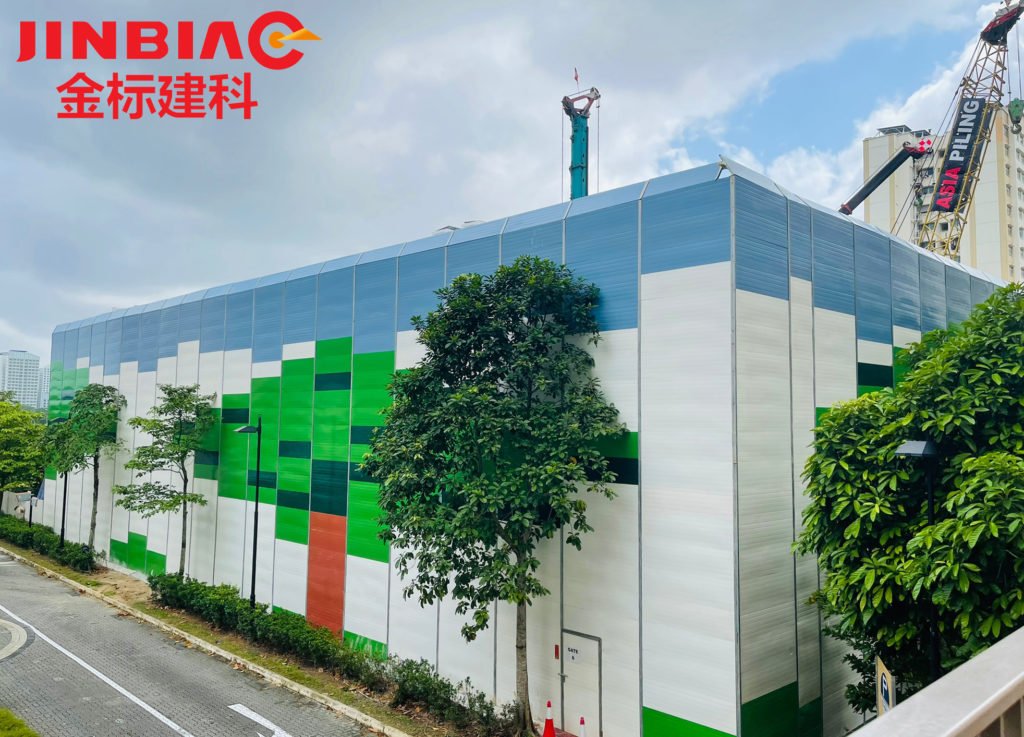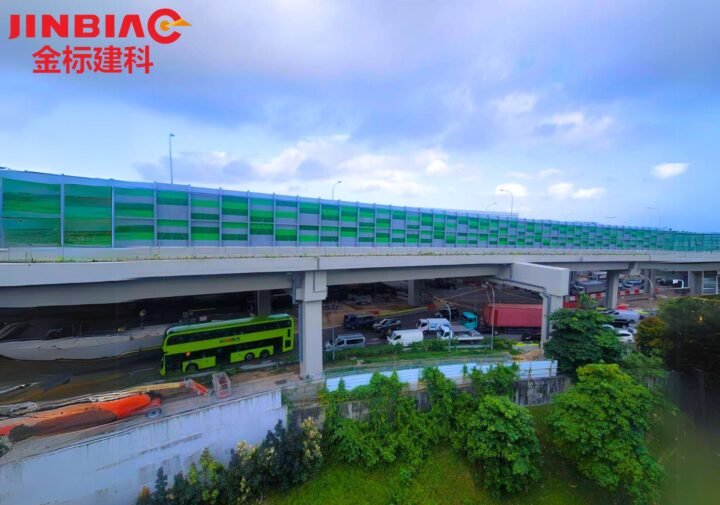
The pulse of city life is often paired with a symphony of urban sounds: honking cars, chattering pedestrians, and the clatter of construction. Yet, beneath this bustling soundscape, there’s another, less conspicuous noise that’s just as integral to urban living – and just as insidiously harmful: noise pollution.
Constructed environments can generate noise levels that profoundly impact our daily lives and, perhaps surprisingly, our health. Noise pollution has been linked to a myriad of health concerns, ranging from hearing damage to increased stress levels and even potential heart problems.
The Role of Noise Barriers
Donning the mantel of ‘silent sentinels,’ a noise barrier plays a critical role in the urban cacophony. Working in synchronisation with construction zones, they act as a shield, not only for the workers from hazardous decibels but also for the public at large. These barriers are an essential tool in mitigating the effects of noise pollution and preserving public health.
How Noise Barriers Work
Noise barriers are effective structures that operate on simple yet powerful acoustic principles. These barriers are specifically designed to absorb, block, and reflect sound waves to minimise noise pollution.
Typically constructed using dense and non-porous materials such as concrete, they effectively break up and dissipate the energy of sound waves. This prevents the noise from travelling beyond the construction site perimeter, keeping sensitive areas unaffected.
In addition to their primary function, noise barriers can be further optimized by incorporating sound-absorbing materials or implementing angled surfaces. These enhancements significantly reduce noise levels, ensuring a quieter and more peaceful environment for workers and nearby communities.
Different Types of Noise Barriers
In architectural design, the guardians of calm come in a variety of forms and materials, each serving a unique purpose.
For those seeking a seamless blend of aesthetics and functionality, transparent acrylic sheets offer a visually pleasing solution while ensuring noise reduction. On the other hand, absorptive barriers, covered in noise-absorbing materials, act as sponges, effectively soaking up sound waves and creating a serene environment.
To strike a balance between visibility and noise control, designers and engineers have the option of semi-transparent barriers made from perforated metals or plastics. These barriers allow for better visibility while still effectively reducing noise levels. With such a diverse and adaptable array of options, professionals can select the most suitable type of barrier to cater to the specific needs of each construction site, ensuring tranquillity and peace in any environment.
Benefits of Noise Barriers to the Public Health
The implementation of a noise barrier brings numerous benefits to public health. By reducing the impact of noise pollution, these barriers help maintain a healthier soundscape that is conducive to overall well-being. Studies have shown that prolonged exposure to high levels of noise pollution can lead to sleep disturbances, hearing problems, stress, and other physical and psychological issues.
Moreover, by containing construction noise within the site, noise barriers also reduce the risk of accidents and injuries caused by distractions from loud sounds. This not only safeguards the health of workers but also protects the public from potential danger. The use of noise barriers is a crucial step towards ensuring the safety and well-being of everyone in the vicinity.
Future Developments in Noise Barrier Technology
As cities grow, so do the challenges of noise pollution. The future of noise barriers is an exciting fusion of design and technology. We are witnessing the birth of dynamic barriers equipped with sensors and microphones that respond in real-time to the ebb and flow of urban soundscapes, ensuring a harmonious balance between construction needs and public health.
Supporting the Use of Noise Barriers
As individuals, our voice – or in this case, our lack of it – matters. Advocating for the use of noise barriers and understanding their necessity in urban construction is the first step in promulgating a quieter, healthier environment. Engaging with local planning authorities, participating in community consultations, and even simple acts like sharing this guide can all contribute to greater awareness and, eventually, a quieter urban landscape.
Conclusion
Integrating noise barriers into the urban fabric doesn’t just wall off the sounds of city life – we protect the very essence of community and ensure that our cities remain vibrant and livable for generations to come. If you are in the construction industry, an urban planner, or simply a conscientious city-dweller, the journey toward a noise-pollution-free city starts with understanding and ends with action.
Hebei Jinbiao is a leading company in Noise Barrier products and Fencing products in Singapore. We guarantee to provide you with the most high-quality Sound Barrier and Fencing products along with our dedicated assistance. Do not hesitate to contact us. We are looking forward to helping you solve your noise issues, safety issues and protecting you from noise pollution as well as ensuring your safety.

